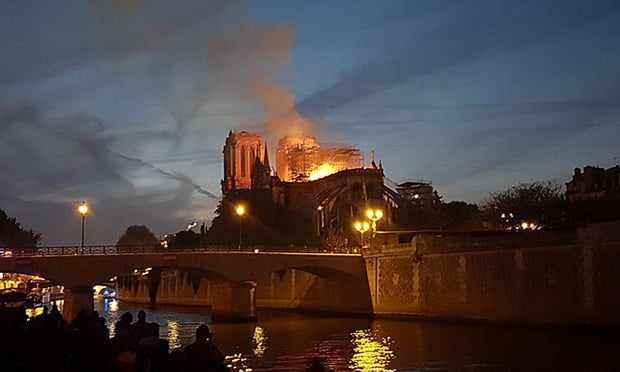 Although the sheer volume of lead that vaporized in the Notre Dame fire was unique, fire restoration practitioners need to be aware of the likelihood that lead may be present in any fire-damaged structure, especially those built after 1978. (Credit: Baidax/Wikicommons)
Although the sheer volume of lead that vaporized in the Notre Dame fire was unique, fire restoration practitioners need to be aware of the likelihood that lead may be present in any fire-damaged structure, especially those built after 1978. (Credit: Baidax/Wikicommons)
On April 15, 2019, a fire broke out beneath the roof of the Notre-Dame de Paris Cathedral in Paris. Over 400 firefighters fought the blaze, which grew uncontrollably and consumed approximately two-thirds of the roof structure, including the 300-foot wooden spire. The spire ultimately crashed through the roof, bringing down with it stone, stained glass windows, and the handcrafted, vaulted oak ceiling dating back to the 13th century. The initial damage assessments for the restoration of the cathedral and many of its priceless artifacts range from $790 million to $1 billion.
Recommended For You
Want to continue reading?
Become a Free PropertyCasualty360 Digital Reader
Your access to unlimited PropertyCasualty360 content isn’t changing.
Once you are an ALM digital member, you’ll receive:
- Breaking insurance news and analysis, on-site and via our newsletters and custom alerts
- Weekly Insurance Speak podcast featuring exclusive interviews with industry leaders
- Educational webcasts, white papers, and ebooks from industry thought leaders
- Critical converage of the employee benefits and financial advisory markets on our other ALM sites, BenefitsPRO and ThinkAdvisor
Already have an account? Sign In Now
© Touchpoint Markets, All Rights Reserved. Request academic re-use from www.copyright.com. All other uses, submit a request to [email protected]. For more inforrmation visit Asset & Logo Licensing.







